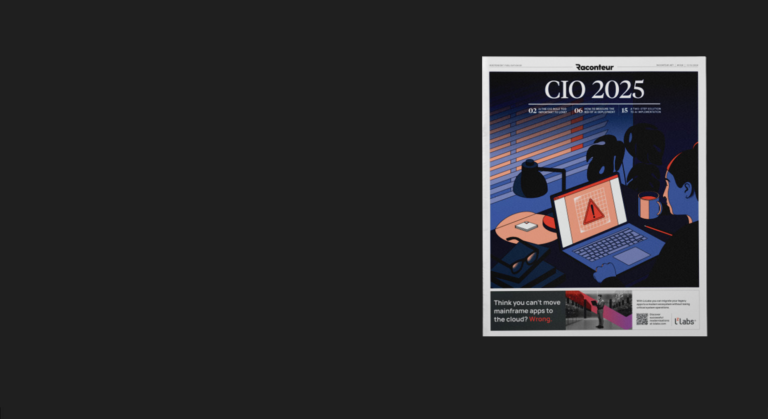The longer you leave it, the worse it gets. While countless legacy environments and applications persist despite inherent impediments, organisations that rely on mainframes for their business today must upcycle their application and data landscape for the challenges ahead – and we understand that’s not an easy transformation.
For companies worldwide, mainframe applications continue to be the lifeblood of their business. These applications were skilfully designed for the business needs of 40+ years ago. However, their capabilities to compete in the 2020s are limited – with mobile or social networking or pervasive analytics, AI, blockchain, metaverse, or whatever else will be coming down the track in the years ahead. Companies suffering from mainframe lock-in face growing strategic risks – including a painful shortage of skills, impediments to digital transformation, and massive commercial risks posed by a shrinking base of software and hardware vendors.
Investment Protection vs. Business Risk
To illustrate what’s at stake, think of a company relying on legacy code, written in COBOL, which was last recompiled in the 70s of the previous century. Naturally, the people who wrote that code are enjoying new chapters in their lives. What would happen if that company’s IT service provider made a simple human error when upgrading an IMS or Db/2 database? This error may take down the company’s online banking application for a day or force down the policy admin system for a week. Finally, the painful truth is that the cost of operating and maintaining legacy systems only grows over time and draws more and more financial resources into ongoing IT operations, making less money available for change and transformation.
Many companies want to keep a fair portion of their legacy applications on the mainframe for investment protection. At the same time, mainframe applications are likely stuck in an increasingly constrained IT environment. Consequently, a compelling case exists for offloading business-critical processes and the underlying applications to today’s highly scalable cloud platforms. The big question is: How can companies transform their mainframe-centric IT landscape without running the risk of failure?
“Personalized” Treatment for each Application
Granted – there is no silver bullet. Companies need to be wary of one-click wonders. Should their mainframe applications be rehosted, rewritten, rearchitected or re-platformed? Each mainframe application may require a specific approach. An iterative and pragmatic treatment strategy is called for – one that aligns with business goals and delivers tangible results and quick wins. As part of our Transformation Consulting Services, LzLabs assesses the advantages and limitations of all options available and collaborates with you to lay out the modernisation strategy best suited for each application.
Supporting the implementation of your strategy, LzLabs offers one of the most efficient and cost-effective approaches to transforming mainframe-borne application environments. The LzLabs Integration platform lets you break apart the monolith and determine the best strategy and migration plan for each application’s future. It provides tools and connectors between the legacy and the modern world as well as patterns that allow companies to modernise using a step-by-step approach. It is independent of the option you chose for your legacy systems modernisation, the so-called “7R’s”.
As you move ahead with your selected transformation approach, the LzLabs Software Defined Mainframe – or SDM for short – is a viable option. This unique approach migrates existing applications from their mainframe habitat to an environment of choice. Preserving application logic, user experience and data formats, the SDM reduces migration risks and substantially decreases testing effort. Thanks to binary compatibility, the switch to the software-defined mainframe does not require any recoding or recompilation of existing code: the entire application landscape can be migrated selectively, one at a time; companies do not need to take the risks of a “big bang.”
But what about interoperability between the legacy mainframe and its software-defined sibling? The LzLabs solutions run alongside and can be combined with legacy applications. Migrated workloads maintain full interoperability with the mainframe. Integrated via a shared central database, both machines keep data in sync. This data synchronisation is paramount to operability across both platforms – including scheduling, monitoring, backup & recovery.
How Clients Created Breathing Space for Their Mainframes
Let’s look at two recent customer cases that illustrate how you can capitalise on LzLabs’ expertise and solutions for fast value delivery.
- A major automotive manufacturer relies on a mainframe application to verify the manufacturability of bespoke configurations. This app should provide timely feedback to sales reps and customers. In this highly complex checking process, which includes supply chains and production capacities, workloads competed for mainframe resources. Increasingly, this resulted in server capping – with the consequence that response times became extremely long and other applications stalled. Consequently, the app was scheduled to run only over the weekend rather than during regular business hours to minimize contention for scant resources on the mainframe. Inevitably, the end-user experience suffered. Another issue faced by the manufacturer was the vanishing skill base for this app.
Experts from LzLabs took a two-step approach. First, the vehicle configuration app was moved to the SDM, while shared data remains on the mainframe. From a business perspective, the most significant improvement is in the end-user experience. The app now runs during business hours on AWS, providing rapid feedback on vehicle configuration requests. The risk of mainframe capping has been eliminated. The second step taken by LzLabs addresses the manufacturer’s retiring IT skill base: SDM comes with a Java interface supporting the coexistence of rehosted legacy modules and newly written ones. This interface enables the customer to move step-by-step from legacy code to native Java.
- An insurance company wanted to replace its mainframe apps with standard off-the-shelf software to reduce costs. The company was also keen on setting a mainframe exit date. Lacking the required skill base, the company ran the risk of losing the functionality of its rich custom developments by switching to standard software packages. Release cycle dependencies further compounded this situation with a range of other apps. Consequently, a “big bang” approach was ruled out.
As a first step, experts from LzLabs looked at the company’s business logic and moved the underlying apps onto the SDM environment. Today, the company’s most critical and complex apps no longer reside on the mainframe, helping the company adhere to the exit date. The company’s data remains on the mainframe for data consistency. A unique gateway enables legacy apps (complete with custom functionality) on the mainframe to call apps on SDM and vice versa, providing the company with a comprehensive solution for its business.
Using APIs, LzLabs built a data and application pipeline, allowing the company to continue transferring business logic to SDM at its own pace.
As the world changes around them, organisations should stay clear of vendor lock-in or cumbersome transformation projects that take years to bear fruit. The right approach embraces a continued dialog between business and IT about the evolution and enhancement of core business applications based on a tech stack that provides flexibility. This is the time for organisations to reduce costs, accelerate time-to-value and enhance agility through cloud-native solutions.



